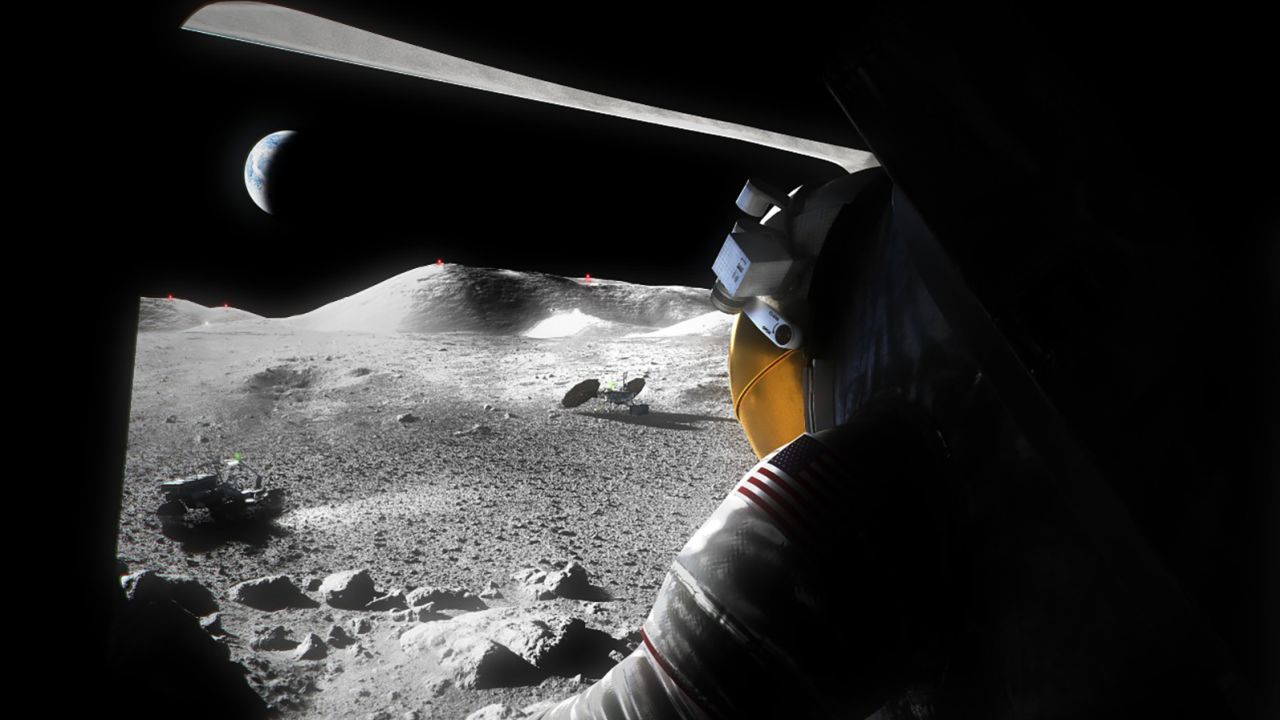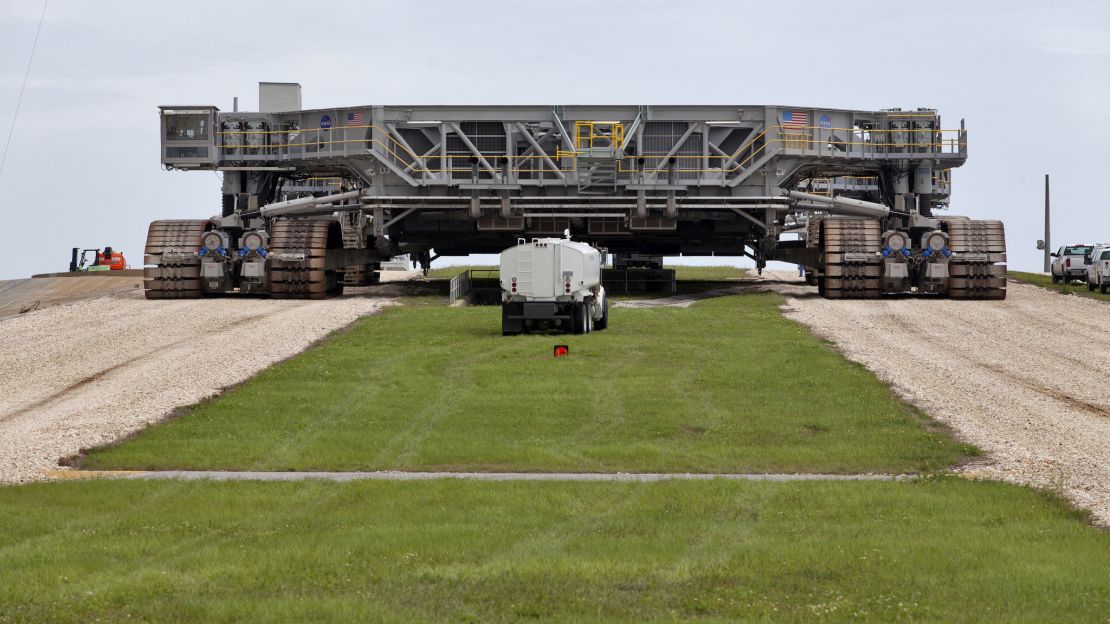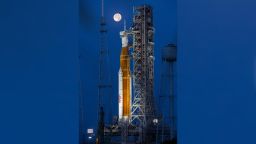Sign up for CNN’s Wonder Theory science newsletter. Explore the universe with news on fascinating discoveries, scientific advancements and more.
The Artemis I mega moon rocket has begun to roll out to the launchpad – and this time, it’s for liftoff on a journey around the moon.
Engineers and technicians have been busy with checkouts and final testing of the Space Launch System rocket and Orion spacecraft inside the Vehicle Assembly Building at NASA’s Kennedy Space Center in Florida. The rocket stack made a couple of trips to the launchpad in March and June for the wet dress rehearsal, a test that simulated every step of launch without liftoff.

On Tuesday night, the real event began.
The Artemis team is targeting its first two-hour launch window from 8:33 a.m. ET to 10:33 a.m. ET on Monday, August 29. There are backup launch windows on September 2 and September 5.
The NASA Kennedy YouTube channel is providing a livestream of the rollout, which began around 10 p.m. ET Tuesday, according to a tweet from the Kennedy Space Center’s verified account. The maneuver is expected to last 10 to 12 hours.
The massive 322-foot-tall (98-meter-tall) stack embarked on a slow 4-mile (6.4 kilometer) ride aboard one of the Apollo-era giant NASA crawlers from the assembly building to the launchpad – just like the shuttle missions and Apollo Saturn V rockets once did.

The 6.6 million-pound (3 million-kilogram) crawler will carry the towering rocket stack and its mobile launcher at a top speed of 1 mile per hour (1.6 kilometers per hour).
The iconic crawler is one of two that have operated for more than 50 years at Kennedy Space Center. The massive transporters were first put to use in 1965 and can each haul 18 million pounds (8.2 million kilograms), or the weight of more than 20 fully loaded 777 airplanes, according to NASA. The crawlers are so wide that a professional baseball diamond could sit on top of each one.
The uncrewed Artemis I will launch on a mission that goes beyond the moon and returns to Earth. Once it launches, the spacecraft will reach a distant retrograde orbit around the moon, traveling 1.3 million miles (2.1 million kilometers) over the course of 42 days before splashing down in the Pacific Ocean off the coast of San Diego on October 10. Orion’s return will be fast and hotter than any spacecraft has ever experienced on its way back to Earth.
The Orion spacecraft will travel father than any spacecraft built for humans has ever flown, reaching 40,000 miles (64,000 kilometers) beyond the far side of the moon, according to NASA.
There are no humans onboard, but Orion will carry 120 pounds (54.4 kilograms) of mementos, including toys, Apollo 11 items and three mannequins.
Sitting in the commander’s seat of Orion will be Commander Moonikin Campos, a suited mannequin that can collect data on what future human crews might experience on a lunar trip. The mannequin will wear the new Orion Crew Survival System suit designed for astronauts to wear during launch and reentry. The suit has two radiation sensors.
Two “phantoms” named Helga and Zohar will ride in other Orion seats. These mannequin torsos are made of materials that mimic the soft tissue, organs and bones of a woman. The two torsos have more than 5,600 sensors and 34 radiation detectors to measure how much radiation exposure occurs during the spaceflight.
This mission will kick off NASA’s Artemis program, which aims to return humans to the moon and land the first woman and first person of color on the lunar surface by 2025 – and eventually make way for human exploration of Mars.
Artemis I will also carry a number of science experiments, some of which will be installed once the rocket and spacecraft arrive at the launchpad.




